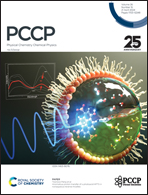Evaluating mAbs binding abilities to Omicron subvariant RBDs: implications for selecting effective mAb therapies†
Abstract
The ongoing evolution of the Omicron lineage of SARS-CoV-2 has led to the emergence of subvariants that pose challenges to antibody neutralization. Understanding the binding dynamics between the receptor-binding domains (RBD) of these subvariants spike and monoclonal antibodies (mAbs) is pivotal for elucidating the mechanisms of immune escape and for advancing the development of therapeutic antibodies. This study focused on the RBD regions of Omicron subvariants BA.2, BA.5, BF.7, and XBB.1.5, employing molecular dynamics simulations to unravel their binding mechanisms with a panel of six mAbs, and subsequently analyzing the origins of immune escape from energetic and structural perspectives. Our results indicated that the antibody LY-COV1404 maintained binding affinities across all studied systems, suggesting the resilience of certain antibodies against variant-induced immune escape, as seen with the mAb 1D1-Fab. The newly identified mAb 002-S21F2 showed a similar efficacy profile to LY-COV1404, though with a slightly reduced binding to BF.7. In parallel, mAb REGN-10933 emerged as a potential therapeutic candidate against BF.7 and XBB.1.5, reflecting the importance of identifying variant-specific antibody interactions, akin to the binding optimization observed in BA.4/5 and XBB.1.5. And key residues that facilitate RBD-mAb binding were identified (T345, L441, K444, V445, and T500), alongside residues that hinder protein–protein interactions (D420, L455, K440, and S446). Particularly noteworthy was the inhibited binding of V445 and R509 with mAbs in the presence of mAb 002-S21F2, suggesting a mechanism for immune escape, especially through the reduction of V445 hydrophobicity. These findings enhance our comprehension of the binding interactions between mAbs and RBDs, contributing to the understanding of immune escape mechanisms. They also lay the groundwork for the design and optimization of antiviral drugs and have significant implications for the development of treatments against current and future coronaviruses.

- This article is part of the themed collection: 2024 PCCP HOT Articles


 Please wait while we load your content...
Please wait while we load your content...